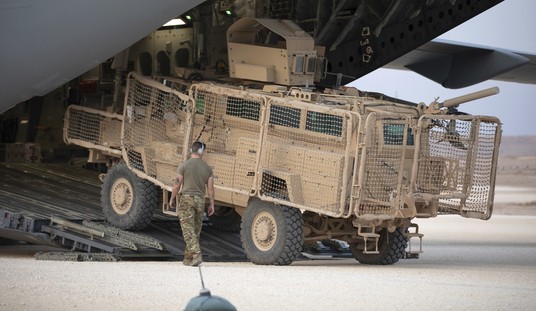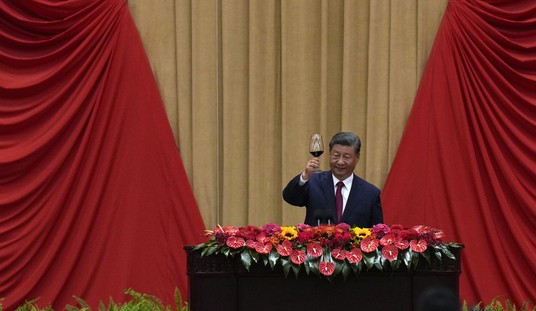
Late on Monday, The Daily Mail posted full body cam videos from two of the officers charged in connection with the death of George Floyd. These videos have been kept out of the public domain by Minnesota Attorney General Keith Ellison, and now we know why.
The videos are from the body cams worn by Officer Thomas Lane and Officer Alex Kueng. The two videos are different lengths but cover a sequence of events lasting just over 18 minutes. Full versions are linked to below, and after the links I have comments with time-stamps referenced.
Lane Body Cam – Video No. 1. This video is 8:38.
It takes about 30 seconds for Floyd to be able to follow the instruction to put his hands on the steering wheel of the car so the officer can see them. Floyd is talking rapidly and clearly not listening to or following the instructions he’s being given.
From :30 to 1:30, Floyd fails to follow the simple direction to step out of the car and face away from the officer. He repeatedly says “Please, please,” and “Please don’t shoot me”. At the point he makes those comments the officer has holstered his firearm, which he only took out at the start of the encounter because Floyd failed to follow the simple comment to show his hands.
At 1:48 when Floyd finally exits the vehicle the officers move to handcuff him. Floyd’s conduct can’t be described as “combative” or “fighting, but neither can it be said that he was cooperative and compliant with the instructions he was being given.
After Floyd is cuffed, Lane turns his attention to the passengers who had already exited the car, while the Officer Kueng walked Floyd from the car over to the wall of a building and sat him down.
Lane asks the female why Floyd was acting “all squirrelly” and she said “I don’t know.”
At 3:55 there is a break in the video, and it resumes with Lane helping get Floyd on his feet. Lane asks Floyd if he was under the influence of anything, and Floyd denied that he was.
At 4:35 the two officers arrive with Floyd at their car which was parked across the street from where Floyd was first encountered sitting in his car. The walk is uneventful but Floyd continues to make relatively little sense in his comments.
At 4:40 Officer Kueng begins to open the back door on the driver’s side of his car, but it remains locked after a couple of efforts. While trying to resolve the issue, Floyd begins to protest about having to get in the car.
At about the 5:00 minute mark Floyd’s protests begin to take the form of some physical resistance — not really combative but just turning his body back and forth to keep the officer from holding on to him. Floyd is not a small man.
At about the 5:28 mark is the first time I hear Floyd claim he is “claustrophobic”. Up to that point, he was just “complaining” about being arrested and saying “Please” “Please” over and over without context for what he’s asking.
At 5:45 Floyd says “Please stay with me man”, and Lane tells him “I will” as Floyd continues to protest being asked to take a seat in the backseat of the car.
Lane is perfectly calm and measured at all times up to this point. Nothing about his actions or comments show him to be agitated or irritated by Floyd’s actions.
At 6:10 a second officer has joined Lane — he may have been there for a period of time and been off-camera and didn’t make a comment — to assist in getting Floyd to enter the vehicle. Floyd says at one point “I’m getting in” but he is at the same time resisting their ability to “move him” forward into the vehicle, and the officer responded “No you’re not.” He’s told repeatedly to “take a seat”, and he responds “I’m not that kind of guy”, something he said numerous times throughout the encounter. At this point, he has turned around to face the officers and is stiffening his body in resistance to their efforts to push him into the back of the car.
At 6:35 he says “I’m going to die in here”, and the officer responds “I’ll roll the windows down.” The officers succeed in getting him to sit on the backseat but with his legs still outside the car, and his upper body not inside the door frame as he continues to resist going inside the car. The efforts by the officers are still not violent — they are simply trying to “force” him into the car by depriving him of other opportunities to move and pushing him backwards into the backseat.
There is no other way to describe Floyd at this point other than bordering on irrational. He says over and over “I don’t wanna win”. “I’m scared”. “I’m claustrophobic”. Seven minutes earlier he was sitting behind the wheel of a smaller car he was driving. For more than 30 seconds the officers let him set there hoping he’ll calm down and slide back into the car, but he never does.
At 7:20 Lane goes around to the rear passenger door and opens it. He then leans in through the passenger side and tries to pull Floyd into the backseat of the car. Before he does so he says to Floyd “I’m going to try to pull you in.” Again Lane is perfectly calm. Floyd can be heard continuing to protest to Kueng on the other side, claiming he’s claustrophobic. You can hear the other officer telling him “Get in the car” and Floyd’s response was to repeat the non-sequitur “I’m not a bad guy.”
As Lane is pulling on Floyd’s upper arm to pull him into the back of the car, at about the 7:59 mark I think you hear him say for the first time “I can’t breath.” Without continuing to struggle with him, and without ignoring him, Lane pulls him all the way through the backseat out on the passenger side, and onto the ground.
Once out on the ground you continue to hear Floyd say “I can’t breath” and this video ends.
Video No. 2 is Off. Kueng’s body cam. It is 18:31 in length and begins inside the store that had reported the passing of a suspected counterfeit bill. After just a few seconds the officers exit the store and encounter Floyd still sitting in his car parked across the street along the curb. Lane goes to the driver’s side, and Kueng goes to the passenger’s side.
At 1:20 you can hear Lane say “Put your hands up” in loud voice. This is the point in Lane’s video where Floyd keeps moving his hands down around his waist and Lane can’t see what he’s doing with them.
At 1:24 Kueng tells the front seat passenger to stay in the car, and lets Lane know there is one other person in the back seat.
At 2:20 the front-seat passenger gets out of the car — he has been talking rationally and calmly with Kueng the entire time, while Floyd was acting erratically on the other side.
At 2:34 you can see through the car to Floyd getting out on the driver’s side, and Lane moving to handcuff him. At that point, Kueng tells the passenger to get back in the car, and Kueng hurriedly moves to the other side of the car to assist Lane.
At 3:15 Floyd is cuffed and being told to walk with the officers. Floyd sounds like he’s crying. He’s argumentative, asking why they are doing what they are doing, and Lane tells him “We’re trying to get you out of the street so you don’t get hit by a car.” Kueng then takes Floyd and sits him down against the wall of a building.
At 4:40 Kueng says to Floyd “Do you even know why we’re here?” and then tells him about the call about him using a fake bill in the store. He then tells Floyd the reason they took him out of the car was because he wasn’t listening or doing anything he was told which made the officers nervous. ALL of that is borne out by both videos. But just as significantly, Floyd responds in a coherent fashion. So he’s capable of having a coherent exchange all throughout the encounter — he just chose to not do so. While he is sitting on the ground he has calmed down and is having a perfectly coherent exchange with Off. Kueng for approximately one minute, questions and answers.
Next the two officers get him on his feet and walk him across the street to where their car was parked.
At 6:15, when they reach the rear driver’s side door, Floyd collapses himself onto the ground, and says “I’m claustrophobic”. Now he begins to sob and make repeated comments not in response to anything being said to him.
Once Floyd is on his feet again, the officers open the back door on the driver’s side and begin a minutes-long process of trying to get Floyd to enter the car.
At the 8:25 mark, Floyd — while continuing to not cooperate — askes if he can sit in the front seat and is told no.
He becomes more erratic, more combative, and less responsive to instructions over approximately a minute as the officers attempt to “pull” him into the car from the passenger side rear door. There is another African-Amercian man standing on the sidewalk urging Floyd to cooperate. He tells Floyd several times “You can’t win” and Floyd responds several times “I’m not trying to win.” This once again establishes that Floyd can understand and process the directions he’s being given by the officers and is wilfully refusing to comply.
At 9:36 on the tape you can hear Floyd say “I can’t breath” while he is in the car all alone, but still struggling against the efforts to keep him in the car.
Over the next minute, it is hard to tell exactly from the video what is happening but it looks like Floyd is using his feet to propel his upper body out of the passenger side door which is open. The officers try to stop him from doing so and keep him in the car, but give up that effort around 10:48 on the video and pull him out of the car on the passenger side. They lay him down next to the car on the asphalt street.
At the 11:00 mark, Floyd is talking nearly continuously. He says “Mama” over and over. He says “I can’t breath” over and over. He says “Mama I love you” a few times.” While the words he’s saying might seem significant to the press and public, the important evidentiary significance of the fact from him speaking is that he’s breathing. Someone who really “can’t breath” is unable to talk in coherent teams because we exhale mostly as we speak. If Floyd actually could not breath — he could not inhale — he would not have been talking in the non-stop fashion that he was.
In my opinion, problems for the Officer with his knee across Floyd’s neck starts at around the 12:00 minute mark. Floyd is no longer struggling against the officers’ efforts. Continuing to kneel on his neck to control his movements becomes questionable at that point.
At the 13:00 minute mark Floyd is still talking and complaining, but there does start to become a difference in his tone, and his words are a bit more limited and breathing seems to get more shallow.
At the 14:00 minute mark he’s continuing to talk. He says his stomach hurts, and he askes for water. He continues to say he can’t breath — that specific complaint had gone on for approximately 5 minutes at that point.
At the 15:00 minute mark Floyd is clearly showing signs of distress, saying only “please” “please” and not much more. His breathing sounds like it is becoming more labored as the same time.
By the 15:30 mark, Floyd has stopped talking, and his movements look more like minor spasms than purposeful movements.
At the 16:00 mark Floyd is still moving, but he is not making any noise.
At the 16:30 mark Floyd appears to no longer be moving.
Starting around the 16:00 minute mark you can hear bystanders engaging the officers more and more forcefully, and by 17:30 they are pointing out that Floyd appears unconscious and is no longer moving or talking. While they are certainly trying to “help”, what the are also doing is distracting the officers’ attention by forcing them to deal with the crowd at the same time they are awaiting the arrival of the ambulance.
I could not discern where in the timeline the Officers made the decision to call for paramedics and an ambulance. I have read that MPD policy, as with many other law enforcement agencies, is that when a subject under arrest askes for medical attention or shows signs of needing medical attention, the officers must call an ambulance. Some departments require the person to be cleared by a doctor at a hospital before they can be booked into custody.
At 17:15 a bystander starts to repeatedly tell the officers to “check his pulse”. Floyd has stopped moving altogether at that point and is silent. The failure of the officers to note the change in his condition and take action in response is an issue.
But that is not murder.
What the videos show did NOT happen was the use of any kind of racial slurs by any of the officers directed to Floyd at any time. The officers never appeared to be angry in dealing with Floyd. To the extent his actions frustrated them, the fairest characterization of how they expressed it was a sense of exasperation. Floyd was a big guy. He was not violently combative, but his “passive” refusal to cooperate and follow their directions make the encounter much more difficult than it needed to be. And Floyd’s conduct was deliberate — there are multiple instances of him engaging in coherent exchanges with the officers and others watching the episode as it unfolded. He heard what was being said to him by third parties and responded. So he heard what he was being told to do by the police after he was placed under arrest and chose to not cooperate.
My expectation is that expert medical testimony is going to show there was no connection between the Off. Chauvin placing his knee across Floyd’s neck and Floyd’s respiratory distress and subsequent cardiac arrest. Chauvin’s knee is not on Floyd’s airway. The autopsy does not reveal any damage to Floyd’s airway as a result of Chauvin’s knee. The placement of Chauvin’s knee did not obstruct Floyd’s airway or his ability to breathe. The cause of death is listed as “cardiopulmonary arrest”, but does not refer to asphyxiation as a contributing factor. “Asphyxiation” refers to cutting off the flow of oxygen into the lungs.
George Floyd quit breathing while he was on the ground, and the officers should have realized that and responded to his condition.
But George Floyd didn’t quit breathing because of anything the officers did to him — at least not anything shown in the videos.














Join the conversation as a VIP Member